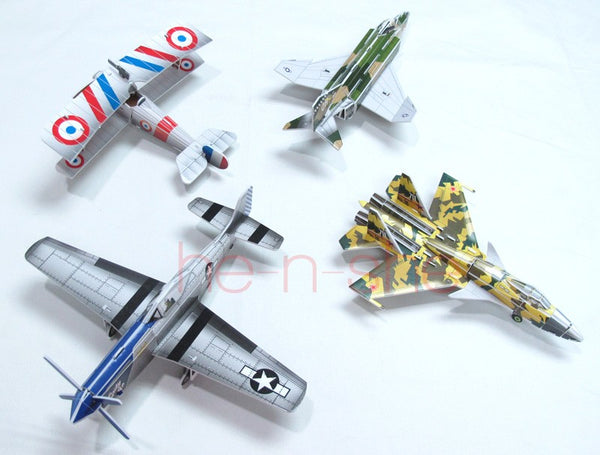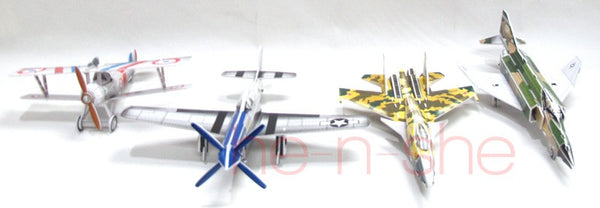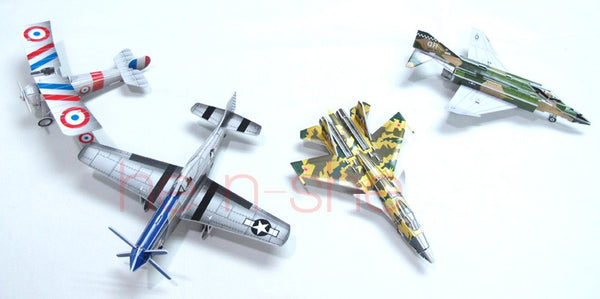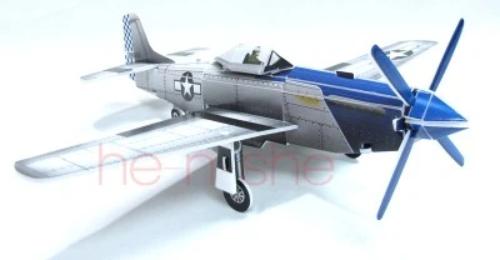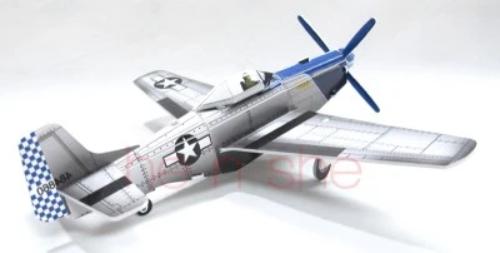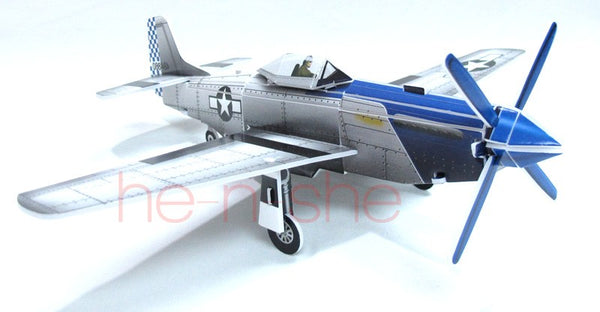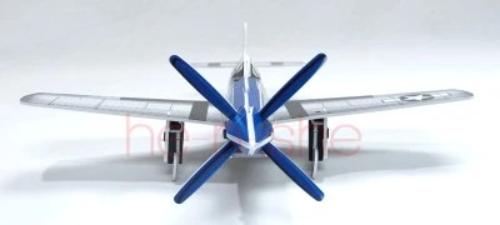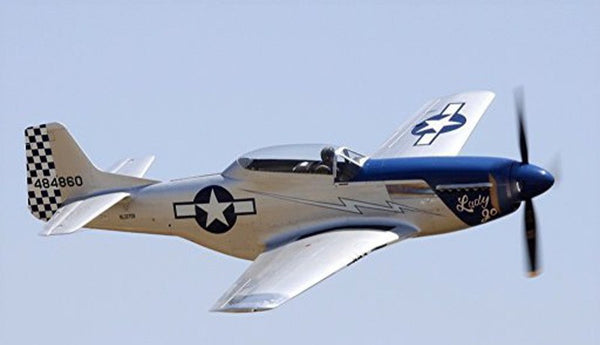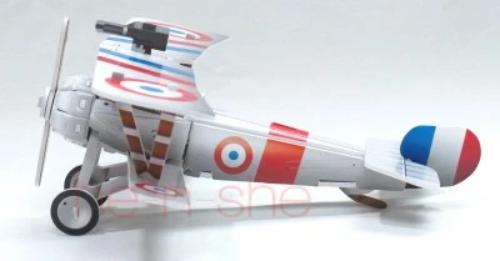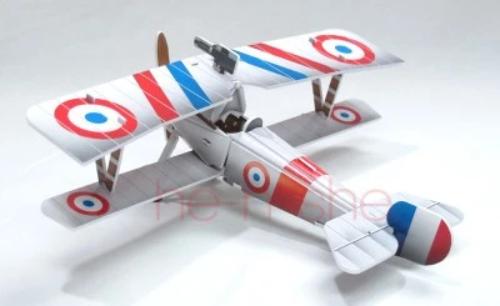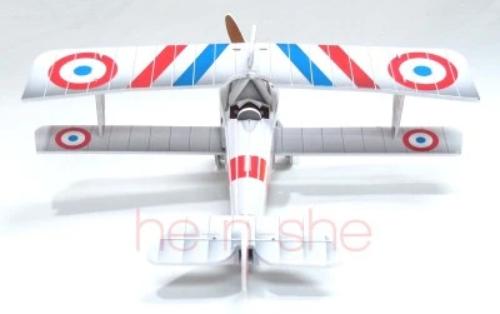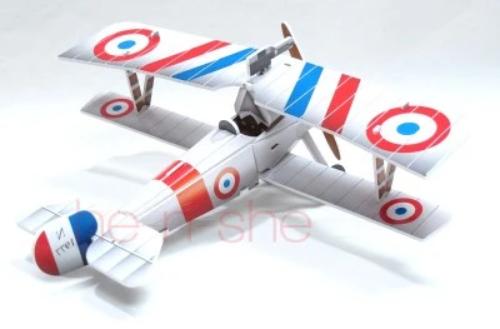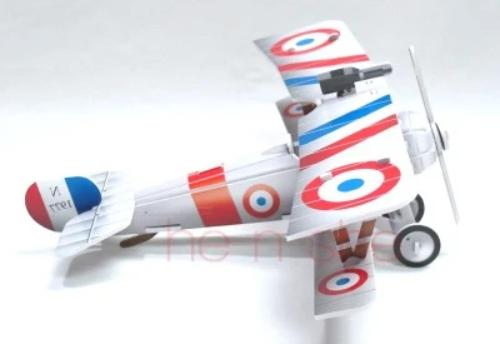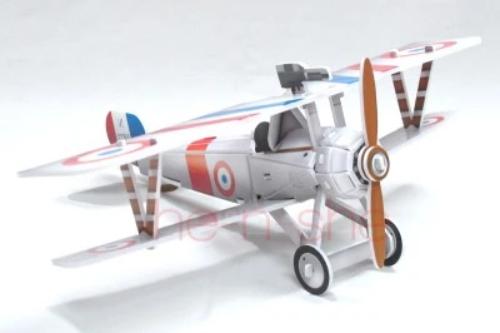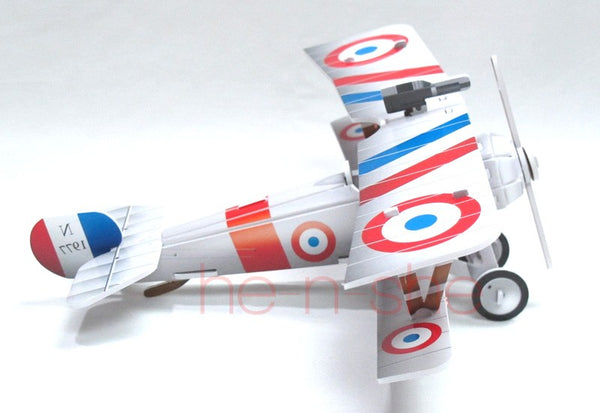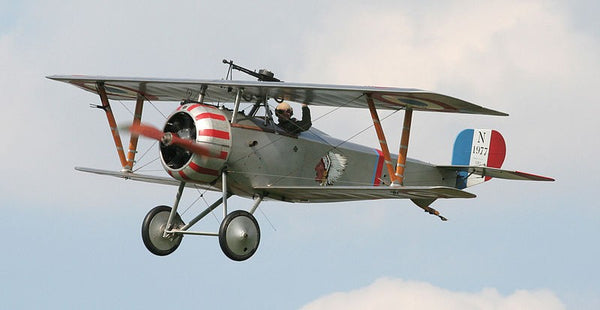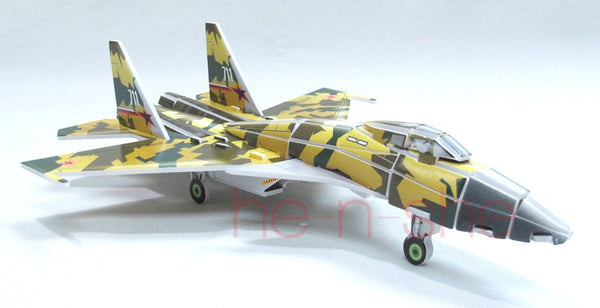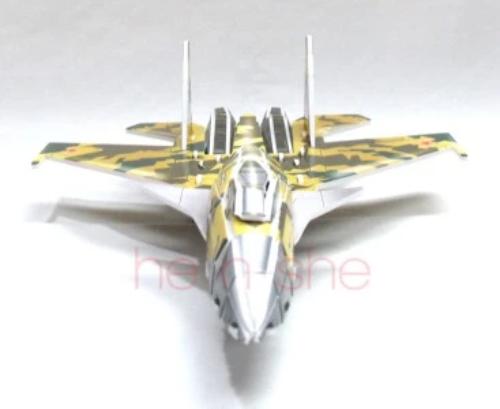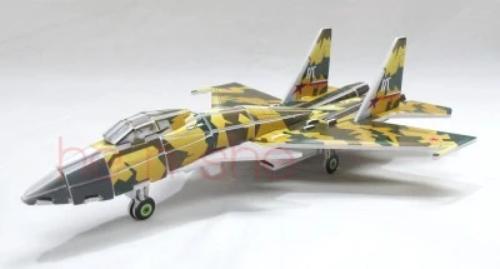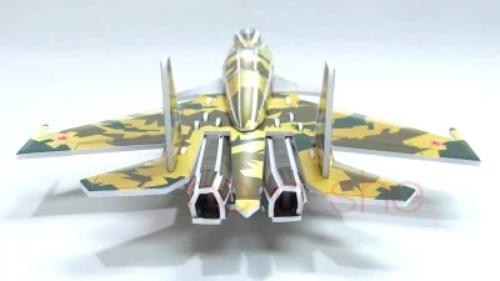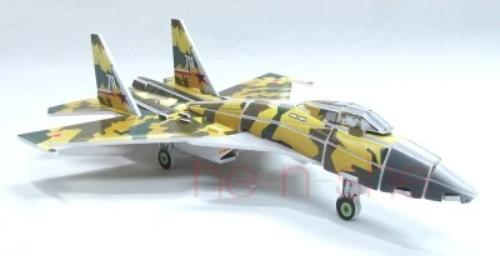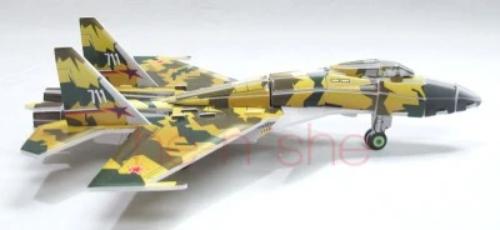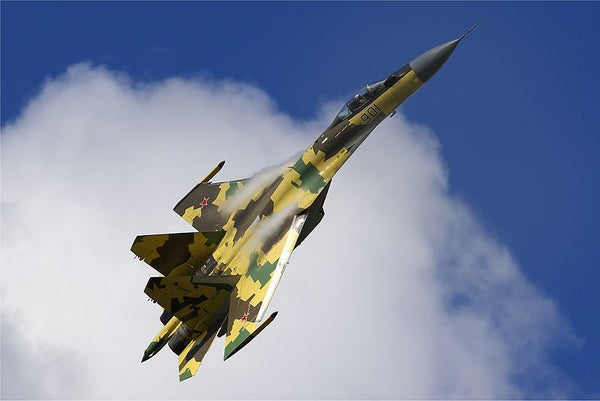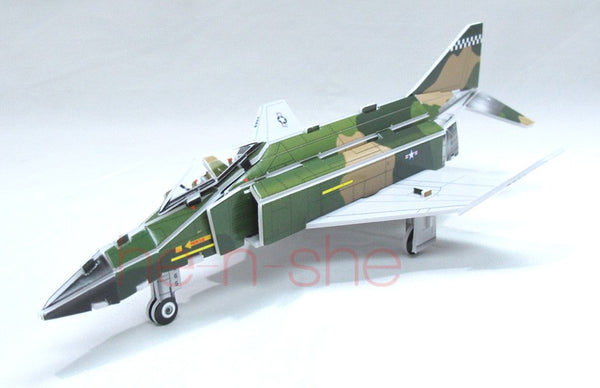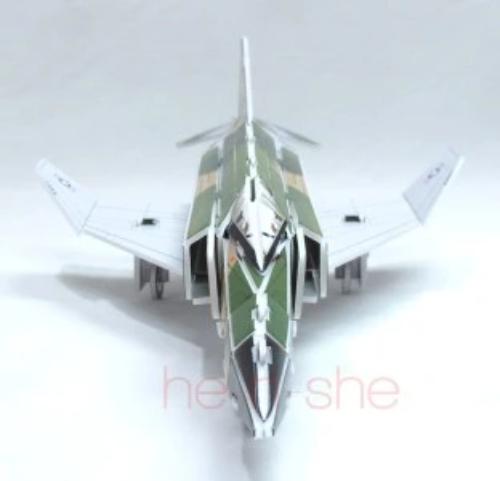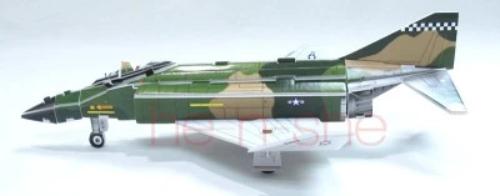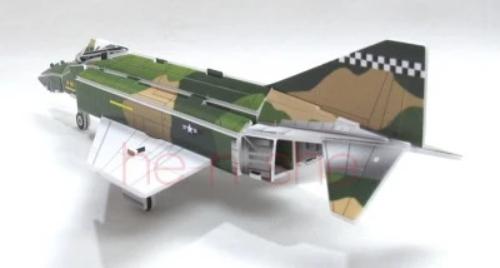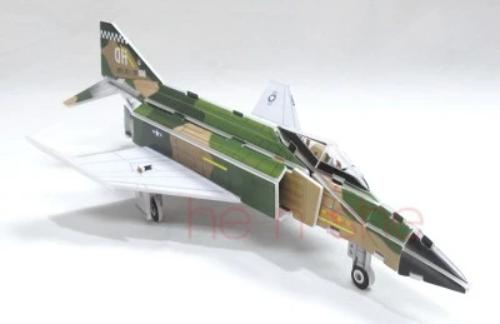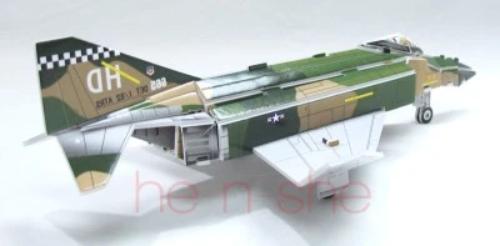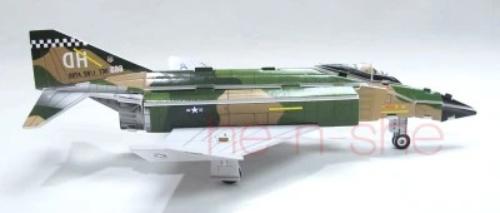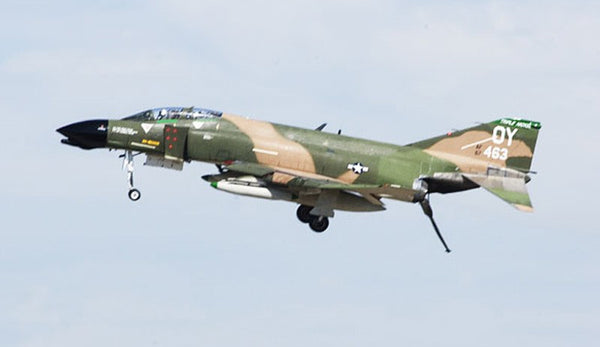92 PCS 3d Puzzle Flighter Nieuport 17 P51D Mustang F4 Phantom Sukhoi 37 9813-22
92PCS 3d Puzzle - Flighter History Nieuport 17 P51D Mustang F4 Phantom Sukhoi 37 9813-22
This is a very details 92 PCS collectiable 3D Puzzle - THE FLIGHT HISTORY, this 3D Puzzle including 4 types of Flighters -
1) Nieuport 17 - France made World War I flighter (built in 1916) Size: 6.5" x 8" x 3"
2) P-51D Mustang - US made World War II flighter (built in 1940) Size: 9" x 10" x 3.5"
3) F-4 Phantom - US made Korean War flighter (built in 1958) Size: 9.5" x 6.5" x 3"
4) Sukhoi 37 - Russian made flighter (built in 1996) size: 8.5" x 6" x 3"
TFlighter History
Nieuport 17
Design and development - The type was a slightly larger development of the earlier Nieuport 11, and had a more powerful engine, larger wings, and a more refined structure in general. At first, it was equipped with a 110 hp (82 kW) Le Rhone 9J engine, though later versions were upgraded to a 130 hp (97 kW) engine. It had outstanding maneuverability, and an excellent rate of climb. Unfortunately, the narrow lower wing, marking it as a "sesquiplane" design with literally "one-and-a-half wings", was weak due to its single spar construction, and had a disconcerting tendency to disintegrate in sustained dives at high speed. Initially, the Nieuport 17 retained the above wing mounted Lewis jun of the "11", but in French service this was soon replaced by a synchronised Vickers gun. In the Royal Flying Corps, the wing mounted Lewis was usually retained, by now on the improved Foster mounting, a curved metal rail which allowed the pilot to bring the gun down in order to change drums or clear jams. A few individual aircraft were fitted with both guns - but in practice this reduced performance unacceptably, and a single machine gun remained standard.
Operational History - The type reached the French front in March 1916, and quickly began to replace the Nieuport 11 in French service. It was also ordered by the Royal Flying Corps and Royal Naval Air Service, as it was superior to any British fighter at that time. Worthy of note is the fact that during part of 1916, the Nieuport 17 equipped every fighter squadron of the Aéronautique Militaire. The Germans supplied captured examples to several of their aircraft manufacturers for them to copy. This resulted in the Siemens-Schuckert D.I which, apart from the engine installation, was a close copy and actually went into production, although in the event it was not used operationally on the Western Front.
By early 1917, the Nieuport was outclassed in most respects by the laterst German flighters. Newer models (the Nieuport 24 and the 27) were brought out in an attempt to retain the type's ascendency. However, the SPAD S.VII had already replaced the Nieuport fighters in many French squadrons by mid-1917. The British persisted with Nieuports a little longer, not replacing their last Nieuport 24bis until early 1918.
Many Allied air aces flew Nieuport fighters, including Canadian ace W.A. Bishop, who received a Victoria Cross while flying it, and most famously of all Albert Ball, V.C.
Like the other Nieuport types, the 17 was used as an advanced trainer for prospective fighter pilots after its operational days were over.
P-51D Mustang
The North American Aviation P-51 Mustang was an American long-range, single-seat flighter and flighter-bomber used during World War II, the Korean War and several other conflicts. During World War II, Mustang pilots claimed 4,950 enemy aircraft shot down, second only to the Grumman F6F Hellcat among Allied aircraft.
It was conceived, designed and built by North American Aviation (NAA), under the direction of lead engineer Edgar Schmued, in response to a specification issued directly to NAA by the British Purchasing Commission; the prototype NA-73X airframe was rolled out on 9 September 1940, albeit without an engine, 102 days after the contract was signed and it was first flown on 26 October. The Mustang was originally designed to use a low-altitude rated Allison V-1710 engine, and was first flown operationally by the Royal Air FOrce (RAF) as a tactical-reconnaissance aircraft and flighter-bomber. The definitive version, the P-51D, was powered by the Packard V-1650-7, a licence-built version of the Rolls-ROyce Merlin 60 series two-stage two-speed supercharged engine, and armed with six 0.5 caliber (12.7 mm) M2 Browning machine guns.
From late 1943, P-51Bs (supplemented by P-51Ds from mid-1944) were used by the USAAF's Eighth Air Force to escort bombers in raids over Germany, while the RAF's 2 TAF and the USAAF's Ninth Air Force used the Merlin-powered Mustangs as fighter-bombers, roles in which the Mustang helped ensure Allied air superiority in 1944. The P-51 was also in service with Allied air forces in the North African, Mediterranean and Italian theatres, and saw limited service against the Japanese in the Pacific War.
At the start of Korean War, the Mustang was the main fighter of the United Nations until jet fighters such as the F-86 took over this role; the Mustang then became a specialized fighter-bomber. Despite the advent of jet fighters, the Mustang remained in service with some air forces until the early 1980s. After World War II and the Korean War, many Mustangs were converted for civilian use, especially air racing.
F-4 Phantom
The McDonnell Douglas F-4 Phantom II is a tandem (two-seat), twin-engined, all-weather, long-range supersonic jet interceptor fighter/fighter-bomber originally developed for the United States Navy by McDonnell Aircraft. It first entered service in 1960 with the U.S. Navy. Proving highly adaptable, it was also adopted by the U.S. Marine Corps and the U.S. Air Force, and by the mid-1960s had become a major part of their respective air wings.
The Phantom is a large fighter with a top speed of over Mach 2.2. It can carry over 18,000 pounds (8,400 kg) of weapons on nine external hardpoints, including air-to-air and air-to-ground missiles, and various bombs. The F-4, like other interceptors of its time, was designed without an internal cannon, but later models incorporated a M61 Vulcan rotary cannon. Beginning in 1959, it set 15 world records for in-flight performance, including an absolute speed record, and an absolute altitude record.
The F-4 was used extensively during the Vietnam War, serving as the principal air superiority fighter for both the Navy and Air Force, as well as being important in the ground-attack and reconnaissance roles by the close of U.S. involvement in the war. The Phantom has the distinction of being the last U.S. fighter flown to attain ace status in the 20th century. During the Vietnam War, the USAF had one pilot and two weapon systems officers (WSOs), and the US Navy one pilot and one radar intercept officer (RIO), achieve five aerial kills against other enemy fighter aircraft and become aces in air-to-air combat. The F-4 continued to form a major part of U.S. military air power throughout the 1970s and 1980s, being gradually replaced by more modern aircraft such as the F-15 Eagle and F-16 in the U.S. Air Force; the Grumman F-14 Tomcat and F/A-18 Hornet in the U.S. Navy; and the F/A-18 in the U.S. Marine Corps.
The F-4 Phantom II remained in use by the U.S. in the reconnaissance and Wild Weasel (suppression of enermy air defenses) roles in the 1991 Gulf War, finally leaving service in 1996. It was also the only aircraft used by both U.S. flight demonstration teams: the USAF Thunderbirds (F-4E) and the US Navy Blue Angels (F-4J). The F-4 was also operated by the armed forces of 11 other nations. Israeli Phantoms saw extensive combat in several Arab-Israeli conflicts, while Iran used its large fleet of Phantoms in the Iran-Iraq War. Phantoms remain in front line service with seven countries, and in use as an unmanned target in the U.S. Air Force. Phantom production ran from 1958 to 1981, with a total of 5,195 built, making it the most numerous American supersonic military aircraft
Sukhoi 37
The Russian made Sukhoi Su-37 (NATO reporting name: Flanker-F) is an experimental single-seat, supermaneuverable multirole jet fighter, designed by Sukhoi. A further development of the original SU-27 "Flanker" it was modified from the first-generation SU-35 (formerly "T10M") prototypes. The Su-37 features an upgraded avionic suite and fire-control system, but its most notable additions are the thrust-vectoring nozzles. Only two prototypes were converted.
During the Su-35 flight test programme, active controls during dogfighting maneuvers could not be attained. At the same time, Sukhoi was exploring the application of thrust-vectoring nozzles for fighter jets, giving it better dogfighting attributes. The first Su-37, converted from the eleventh Su-35, performed its maiden flight in April 1996 at Zhukovsky. It was joined by a second prototype in 1998. Throughout the entire program, the Su-37 demonstrated its potential to prospective operators at numerous air shows, performing maneuvers which were previously thought as impossible, among which was a 360 degree somersault. Despite its potential tactical advantage, the Su-37 did not enter production, and instead remained as a technology demonstrator for updated Su-27 family aircraft such as the export SU-30 and the Su-35BM.



































